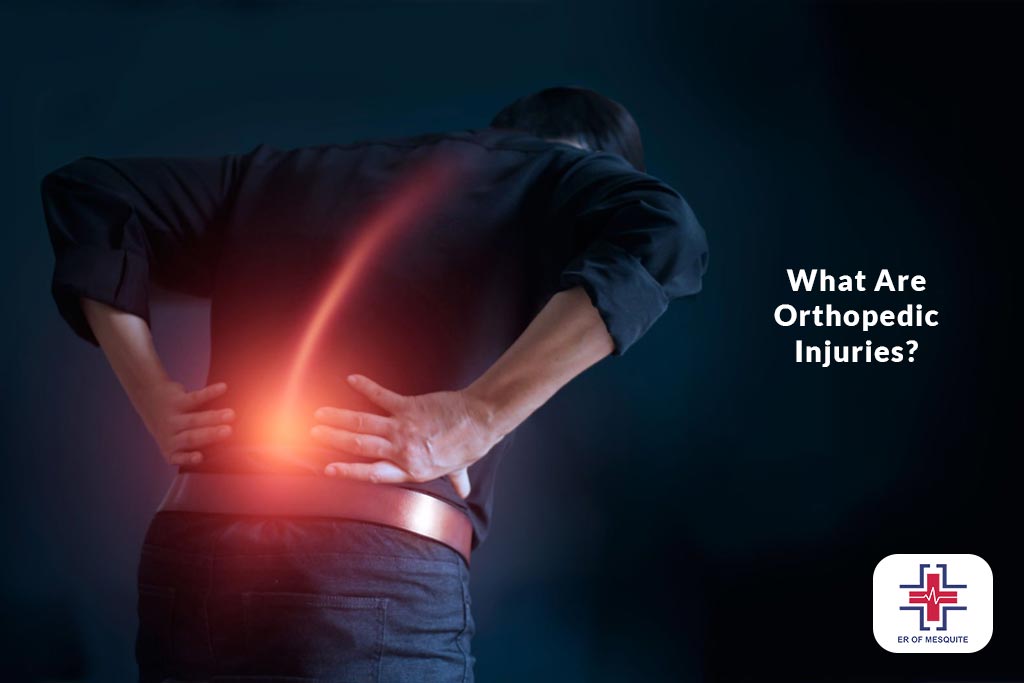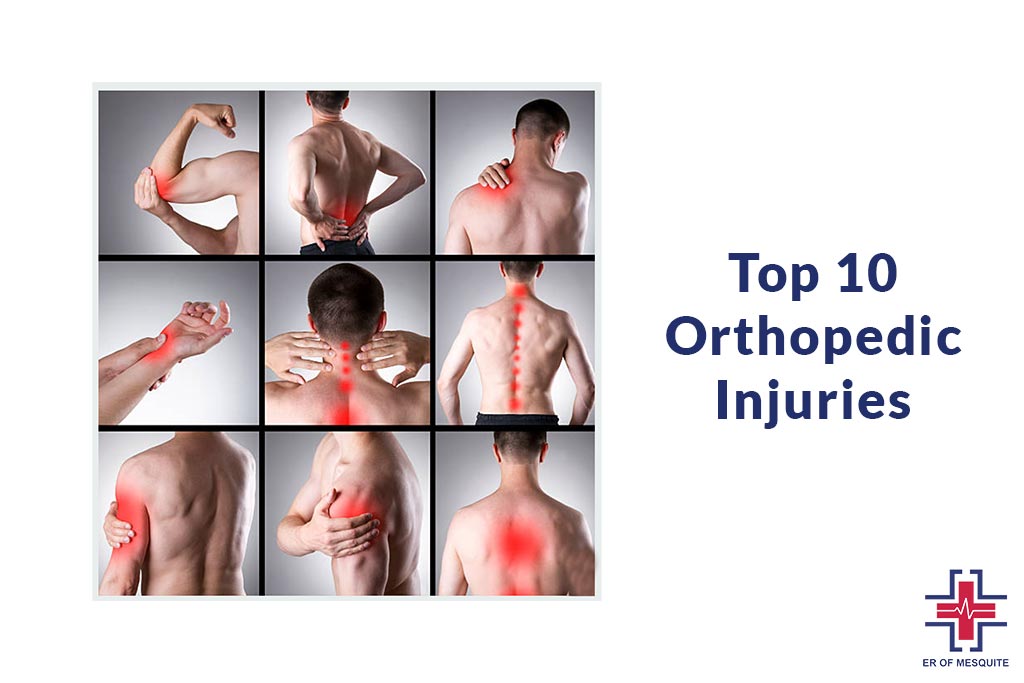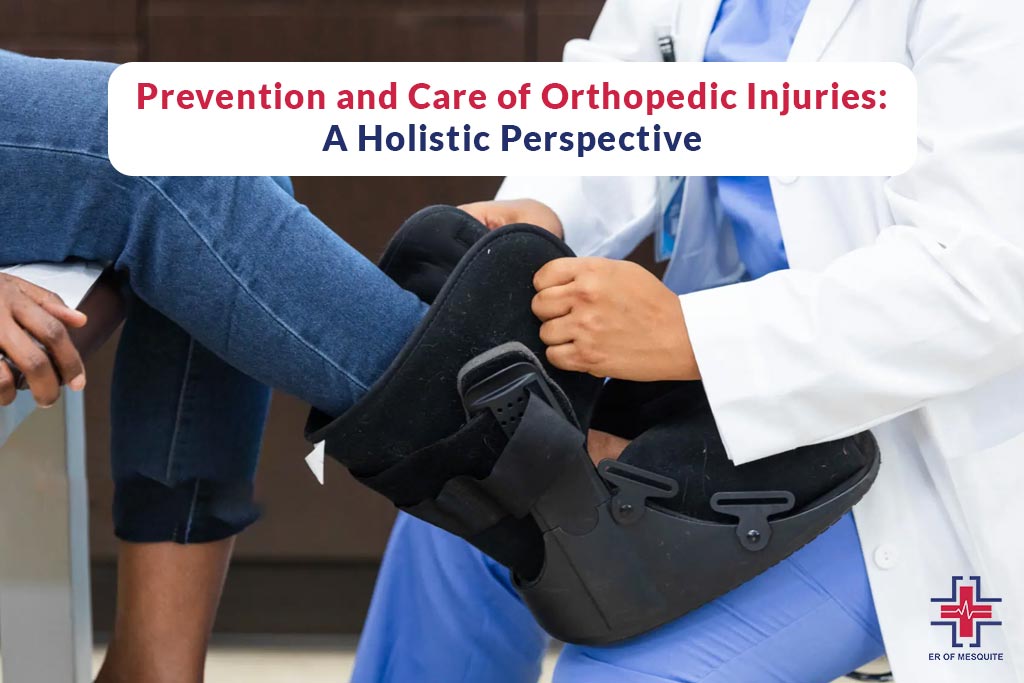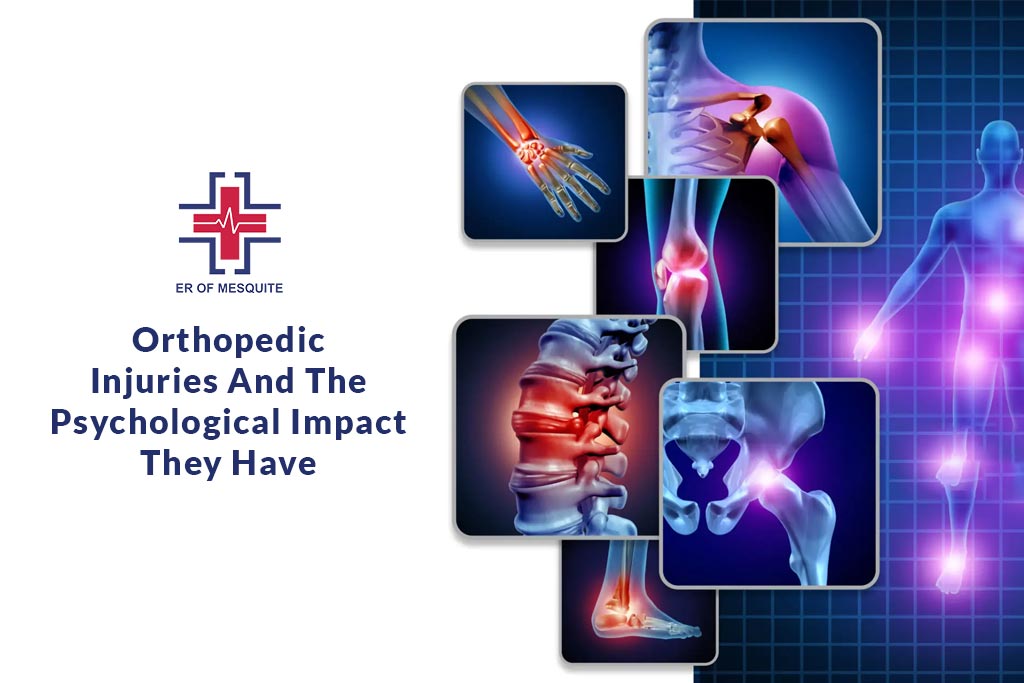As for the musculoskeletal system damage which is called a general category under the name of orthopedic injuries conditions such as fracture, strain, tears, dislocation, and muscular weakness also fit in. Besides traumatic injuries, this category also includes chronic ones that can be covered, to mention a few: breaks, dislocations, strains, sprains, and bone diseases like osteoporosis and arthritis. In contrast to individuals who enjoy the freedom of movement, it is very disheartening that one cannot run or walk without pain because of an injury. This stress is not motivation at all. Since learning about the causes, the content of the transmission, the cure, and the prevention of mental illnesses is important, it is not superfluous.
What Are Orthopedic Injuries?
Like the athlete lifting a heavy weight, their muscles are being pushed to their limits and can become injured from improper form, overuse, or sudden impact. These injuries may happen in a variety of different ways for example it could be through an accidental fall, a sporting injury, or a workplace-related incident or they might be gradual and decrease your quality of life over a long time. They may result in pain, swelling decreased mobility, and a major distraction from sporting activity or individual duties.

The consequences of orthopedic trauma encompass the aspects of physical pain as well as effect the mental part of the human condition. Pain which is related to some chronic conditions can cause some anxiety and depression, in addition to the whole thing, which can worsen the recovery process. Additionally, the economic impact may involve healthcare costs and reduced income, which is an added concern to affected individuals and their household’s financial stability.
Orthopedic injuries matter not only due to proper treatment but, also, for the process of their prevention. Given the awareness of the underlying issues and risk factors that contribute to these injuries through physiotherapy, individuals can exercise moderately, incorporate exercises that are suitable for them, and take measures to prevent such injuries. Similarly, early diagnosis and timely intervention can lead to positive treatment results, shorten the recovery period, and lessen the extent of a person’s disadvantages that appear in the long run. In the light of this, improving understanding and steps towards preventing these injuries become a key factor in preserving an overall good health status.
Common Orthopedic Injuries
The trauma of orthopedic injuries covers the entire age population and hampers negatively on any aspect of human activity. This ranges from the damage of many features of the system which are bones, muscles, joints, tendons, and ligaments. Getting a grasp on the sorts, reasons, indications and cures of central musculoskeletal mishaps will enable people to find timely and valid care encouraging their recovery and saving them damage.

Fractures
There are instances of fractures, also known as broken bones, that are among the most common orthopedic injuries. They can vary from a neutral fracture up to a full break and belong to a group of fractures which are divided into different types- stable, compound, transverse, and committed. Risk factors range from acutely injuring limbs in an accident or play performance to long-term fatigue of bones as a result of repetitive emotional hardships.
The pain may be immediate or delayed and is often accompanied by swelling or redness and that usually leads to an inability to use the affected part. Treatments are based on the severity and the exact location of the fracture, but they usually consist of casts or splints to hold the fractured area stationary, pain medications, and surgery if needed to reset and stabilize the broken bones using pins, plates, or screws.
Sprains and Strains
However, many people just consider sprain and strain alike when in fact they impact one of the extremely different parts of the musculoskeletal system. Distinctions can be made between a sprain where the ligaments, connecting bones at the joint, are involved, and a strain where the muscle or tendon, which the fibrous cord attaches the muscle to bone, is affected. Sprains refer to the situation when ligaments get overstretched, thereby resulting in torn ligaments around ankles, knees, and wrists areas. Some types are injuries to muscles and tendons often located in the back and a hamstring region.
Symptoms of both diseases have in common pain, swelling as well, and a limited shelf of mobility with instability of the joint that appears only in sprains. The doctors usually start with physical tests and sometimes use machines like X-rays, etc. One method of treatment for both is RICE(rest, ice, compression, and elevation), surgery, and/or physical therapy used for severe impairment.
Dislocations
Dislocation is the disassembly of the end of a bone from its normal place and most commonly it involves the shoulder, fingers, and knees. The causes can be devastating blows, falls, and any other suffering from the symptoms of extreme pain, swelling, lack of mobility, and the appearance of the joint.
Early medical attention which is required to line up the bone through the use of instillation and restoring functionalities is frequently done under anesthesia. Rehabilitation could occur afterward to increase the mechanics of the joint and prevent further dislocations. This would enable to reduce the negative consequences for patients due to repeated incidences of dislocation.
Tendonitis
Tendonitis is an inflammation of a tendon that is mainly due to repetitive strain but can also be due to more serious injuries. It often shows the picture of the shoulder, elbow, wrist, foot, and heel. One can experience pain around the tendon and affected area as well as it may be aggravated by movement. There will be swelling and tenderness also.
Diagnosis is performed by a physical examination and tests like radiology. A treatment plan will be based on ice, rest, and anti-inflammatory medication for pain-relieving and swelling reduction. A physical therapy program could be tailored to help in increasing muscle strength to help in the process of keeping the recurrence at bay. In the most stubborn instances, it may be necessary for the surgeon to operate for the repair of the hurt tendon.
Hence as anyone who is engaged in the activity of sports, managing the health of people at risk for the above injuries requires understanding the nature of the injuries and their treatments. Early diagnosis and optimal medical care are the most versatile weapons to mitigate the effects of these injuries and guarantee quick and curative treatment.
Orthopedic Conditions and Injuries: Managing the Ongoing Problems
Orthopedic health is not confined solely to acute trauma that emergency procedures are mostly doing; it also incorporates chronic disorders that have serious effects on an individual as well as can put them at more risk of further injuries.
The deterioration of bone structure, as in the case of osteoporosis, and a general decrease in joint function, not only have their specific challenges but also may result in other parts of the body being more susceptible to damage. Awareness of these factors, the impact they have on the ability to sustain or prevent injury, and the tactics that can be used for long-term health are an indispensable part of the prevention of further possible harm or the degradation of the latter.
Chronic Conditions May Lead to Injuries Over Time.
- Osteoporosis is a disease of weakened bones so they can more easily break. Medically referred to as “silent disease,” such a diagnosis is not perceptible until an individual experiences a fracture of a bone upon slight fall, or in severe cases if, under pressure, someone happens to bend or cough. The spine is the most vulnerable spot in the body for brittle bone (osteoporosis) fractures, especially the back (vertebra) fractures, wrist, and hip fractures; The backbone usually causes pain, disability, and death, especially after hip fractures.
- Arthritis, one of the most common of which include osteoarthritis and rheumatoid arthritis, is the result of the inflammation of joints in the body, which manifests as pain, stiffness, and swelling. Arthritis has such an effect on the body that joint instability and deformities may be formed together with impaired mobility and balance, and consequently, an increased risk of falls which may result in severe injuries.
Top 10 Orthopedic Injuries
The number of people facing orthopedic injuries remains large, including the millions of people in different parts of the world. These are the injuries that confirm that the musculoskeletal system made of bones, joints, ligaments, tendons, and muscles causes the problem. Knowing the most multiple orthopedic gymnastics can assist in diagnosis in its early period and treatment. Here below the major 10 injuries of anatomy.

Rotator Cuff Injuries:
The rotator cuff is a network of strong muscles and tendons that reside around the shoulder joint to maintain hand support and shoulder joint stability. It also allows the person to perform motions in the shoulder area. The subacromial area might have tendons also and being one of the most common rotator cuff injuries the edge of the capsule with some stress can be also among the reasons for this kind of injury. One of the symptoms (sic.) of rotator cuff condition is an ache in the area around the shoulder, limited movement, and weakness there.
ACL Tears:
The main part of the ACL ligament column is a kind of protein that attaches to the tips of the tibia along the capsule. It works like a barrier that stops the leg from bending backward. Besides soccer as a sport with a lot of quick cuts and sliding movements by the athletes, this presents the question of why this anatomical construct is susceptible to being injured in one way or another, and this is something that we all should know. Headaches and shaking bodies are the symptoms. With these in mind, I found myself unable to walk properly and at times becoming stiff and struggling with bending.
Meniscus Tears:
The space in the joint that looks like the cartilage pad known as the meniscus is the one that is typically injured by pulling the leg in a direction that causes a sprain or twist. Symptoms will be joint pain, swelling, and a W-shaped or water-on-treadmill appearance. With a feeling of ‘catching or locking’.
Carpal Tunnel Syndrome:
Later, carpal syndrome brought about by the median nerve compression on the wrist, serves as the main factor to be considered. The timing, the joint movements of various parts, and the fact that there is little media coverage of this condition make this the main cause for its existence. The symptoms might be exhibited as wrist pain, numbness, or tingling and sensations that begin to weaken the hand and fingers.
Tennis Elbow:
It is also known as lateral epicondylitis in case it is triggered by the wear and tear of the common extensor tendon of the forearm. The disease is more frequently found in tennis players as they are winding and cocking the wrist for an extended period. I found this most challenging when I used to squat, grip, or even lift a heavy object, and the edging part of the bone on the outside of the elbow takes heavier strain.
Ankle Sprains:
An ankle sprain is the result of the game which involves twisting or rolling not only the ankle tissues but also the unfriendly movement of the position from a state of membrane to the one of tearing. Being a fracture, one may feel pain around the fracture and redness/blue color with the part hurting a lot when walking normally.
Plantar Fasciitis:
The Plantar fasciitis may pretend to be strong for that layer in between the heel and the toes called the plantar fascia as it functions as a medium for the transfer of energy, but it is a condition deep down in the body. Oversize, inappropriate footwear usage, and/or any anomalies in a foot structure that cause the one to develop the chronic condition over time. Heel pain is more trusted to be like a sign that goes in hand with the ensuing waking up every morning and throughout the day, immediately after long periods of rest (seated).
Lower Back Pain Issues:
The easy way to say this is that low back pain is common. It is a disorder of the skeleton. It is created at the site of the muscle attachments or intervertebral discs due to stenosis or a degenerative spine. The symptoms may differ from sudden pain at times to full sciatica, thereby, hindering their movements, hence, they cannot perform even simple duties.
Hip Fractures:
Many times it may get the herd of adults down as they fall on getting shocked and startled. The adult is at high risk with an age group of old people. The hip joint is more prone to be compromised due to its oblique cleavage, at for instance the femoral neck, at the intertrochanteric points, and at the head of the femur requiring emergency medical attention with at times emergency surgical operations as well.
Osteoarthritis:
As degenerative joint disease arises, osteoarthritis that breaks down the cartilage on the surface with time appears so that the patient complains of pain, and stiffness, and has restricted mobility as a result. These joints that are specifically the knees, hips, muscles, and spine are my target ways hence I use the load techniques. Yet, the immersiveness feels contagious or like a moving emotional roller coaster.
Prevention and Care of Orthopedic Injuries: A Holistic Perspective
Sports-related orthopedic injuries may often cause serious problems for an athlete, it could be a problem with pain, trouble with movement, or anything. But, a preventive attitude and proper treatment can assist in not only a longer life quality but also help to avoid some of these issues. Here’s a detailed look at the key components of prevention and care in orthopedic health: Here’s a detailed look at the key components of prevention and care in orthopedic health:

Importance of Prevention in Orthopedic Health
Prevention is the vital first step in preserving a sound position from the occurrence of these injuries. Preventative measures help individuals avoid the chance of musculoskeletal issues and ensure their movement and function are not compromised in any way. In its turn, prevention involves some important areas, which include an appropriate lifestyle attitude, good ergonomics, as well as special exercises aimed to strengthen your muscles and joints.
Lifestyle Changes and Exercises for Injury Prevention
Healthy eating and fitness habits are the key to avoiding types of injuries, particularly to the head and the skeletal system. Decreasing weight and keeping to the right weight for height, functioning with physical activities, and less sedentary behavior help with reducing the stress on joints and muscles. Participation in specific exercises aimed at bettering all aspects of flexibility, balance, and force can help prevent falls and injuries, especially among seniors. Furthermore, maintaining good body techniques involving ergonomics while undertaking daily activities will be fundamental in reducing repetitive strain injury risks.
Rehabilitation and Recovery Processes:
Rehabilitation is the central facet for the success of recovery after an orthopedic accident or post-surgery. Modalities of rehabilitation are completed according to the unique case by combining tasks oriented on the performance of motion, strength, and function recovery. By use of therapeutic exercises, manual therapy, and functional training, their ability to get back independence will rise and they will be felicitated to go on with their daily routine. Adherence to an exercise regimen and regular performance of exercises will make all difference for however fast one may recover from their injury and to prevent future injuries.
FAQs
How many persons do they often face mentally-related consequences after having orthopedic trauma?
Tens of thousands of patients suffer from the mental burden of orthopedic personal injuries, primarily, feeling upset, anxious, and even depressed during the rehabilitation process. On the other hand, it is crucial to have sound knowledge that the emotional complications that happen as a result of these injuries can be shared and accepted, and thus the recipient should seek support to cope with this.
What are some frequently encountered psychological problems that patients experience as a result of orthopedic trauma?
A wide range of psychological issues like the helpless attitude, autonomy rebellion, anxiety from the recurrence of past injuries, and exasperation from restricted movement or engagement in some activities are part of generally suffering people. Adjusting to lifestyle changes, dealing with pain, and changing circumstances can even be a source of emotional stress.
What strategy can successfully avoid the psychological consequences of older trauma injuries?
Strategies for coping could be reaching out to buddies, relatives, or support groups to get encouragement, doing relaxation techniques like deep breathing or mindfulness, keeping up with useful activities to replenish their clarity and balance, and talking openly to medical professionals about emotional difficulties.
Can the patients be sure they will not encounter any hiccups or mood swings during the recovery period?
Yes, loss of pace or a bit of fluctuation in mood during the recovery steps from orthopedic injuries is an ordinary feature. Although the lines of an increment probably are not always straight and a race for a breakthrough is not a smooth one, there is a common obstacle on the way. Pushing through difficult times by being patient with oneself, treating oneself with kindness, and celebrating small and big achievements can be used to be more effective in coping with the unpredictability of the entrepreneurial journey.
What should can people do to find out when they need referral to professionals for the psychological impact of orthopedic injuries?
A person should see a professional if it has been a few months and she has still been out of the mood, nervous, and hopeless, and these patterns are interfering with her daily tasks and spoiling her relationships with her family or friends or interfering with the recovery process. Interdisciplinary support from mental health professionals can be a great resource in dealing with emotional distress. The professionals may provide guidance, support, and mental therapies that can help to tackle emotional problems efficiently.
Conclusion
Lastly, to note the impact of the psychotherapeutic status of orthopedic injuries, we cannot underestimate the fact that they are more than physical pain and may lead to deteriorated mental health. Knowing the emotional problems that a person with such injuries struggles with, a strategy of how to deal with the stress peacefully must be developed.
Seeking guidance and assistance from healthcare practitioners, close associates, as well as mental health caregivers is not only crucial for the actual physical recovery but mental too. The use of persistence and self-care, with some proactive strategies toward mental health, can be the determination to climb stronger and be more resistant to the issues presented by orthopedic injuries.
For immediate orthopedic care and support, visit Orthopedic Care Mesquite. Don’t let orthopedic injuries hold you back. Get prompt treatment at Urgent Care Mesquite for fast relief and recovery.
